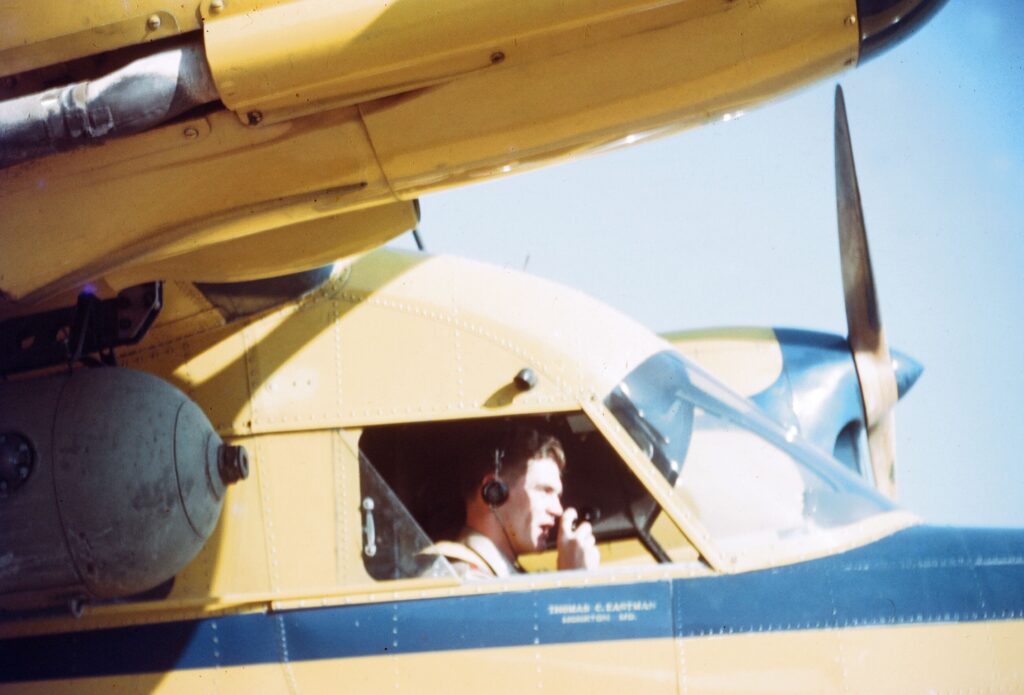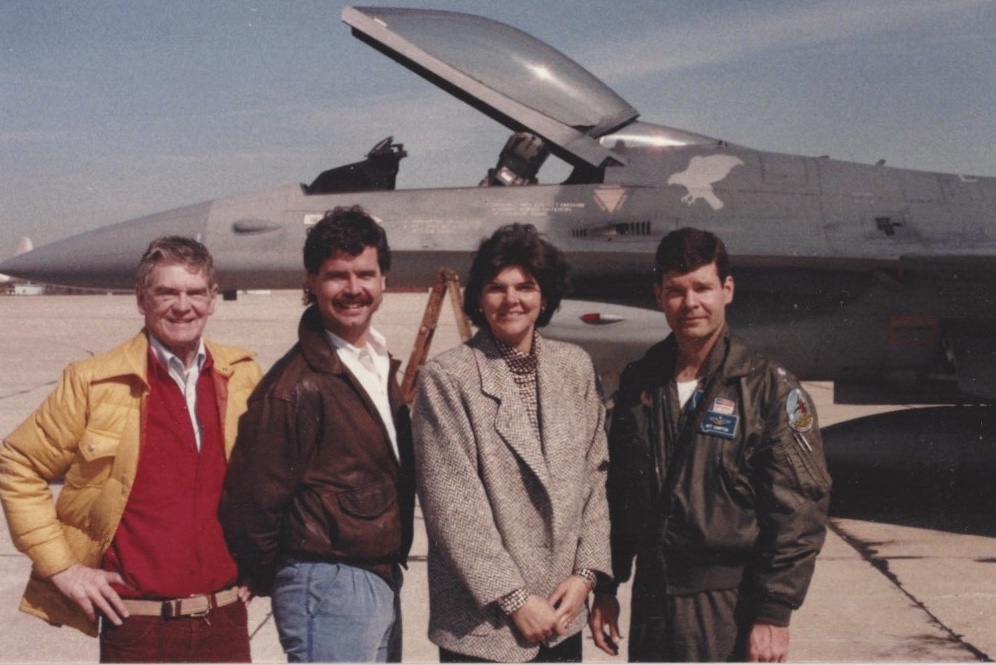
Charles Compton was like many a Chicago teenager who learned to fly in the late 1930s and impressed a lovely girl or two along the way on airborne dates. One beauty would become his wife.
“It was a lot of fun years. But then it all changed,” Compton said in 2011 when he was promoted to the rank of colonel by the Civil Air Patrol to honor his life of service.
Dec. 7, 1941
“I was out practicing touch and goes, and I landed. Somebody came out and said, “all aircraft are grounded,” he said. No one knew what was coming next.
Sept. 11, 2001
ABC News White House Correspondent Ann Compton started a routine day with a chore made easier by a run of the mill story. She was the pool reporter responsible for doing all the fact gathering for other broadcast news media outlets as President George Bush listened as Florida grade schoolers read for him. As a parent It was a lot of fun to witness. But then it all changed.
Compton watched the President’s face as White House Chief of Staff Andy Card whispered in his ear, “A second plane hit the second tower. America is under attack.”
“The Pearl Harbor moment was immediate,” Compton said. “As we were taking off, the Pentagon was hit.”
For the next 10 hours, the network TV reporter was one of the few on Air Force One as the presidential aircraft and its fighter escorts headed for cross-country protection, soaring above a nation of planes quickly descending and landing as fast as they could, wherever they could. All aircraft were grounded, and no one knew what was coming next.
August 1943
A little plane flew through the mist of a New Jersey morning off New York Harbor and pulled into a tight circle to sweep low, glancing for U-boats ravaging shipping just outside major harbors and along the coast. Charlie Compton was in his own plane, wearing a makeshift Army Air Corps uniform of the Civil Air Patrol. The CAP was organized formally six days before Pearl Harbor. America wasn’t ready to defend itself on the home shores due to limited military planes and pilots.
Right after Pearl Harbor, Compton tried to get into the fight and fly with the Army and Navy but was denied by both for having only one kidney. He eventually found his way to the first coastal patrol base of the Civil Air Patrol in Atlantic City, New Jersey.
The Axis Powers were more than ready. An east coast oceanfront of sunbathers and ship traffic quickly became a kill zone of merchant convoys being attacked within sight of shore. The bodies of merchantman washed ashore as ships carrying vital supplies and war materiel to Europe were sometimes sunk amid the explosions and towering flames of torpedoed tankers.
The Germans called it “the happy time.” But the little yellow planes kept coming.
One of them would be Compton and a fellow pilot hunting for submarines one day, escorting a convoy the next. Through the Army and then Navy, the escorts began to make a difference.
The goal wasn’t necessarily to sink subs but to drive them away, like a border collie does predators of the sheep. And in short order, the sheep were no longer going to the slaughter and the hunter became the harried.
The network of coastal patrol bases stretched from Maine to Mexico.
For some time now the CAP planes had been armed with an assortment of bombs, singly and in pairs.
“In mid-May 1942, senior Army and Navy leaders authorized the arming of CAP coastal patrol aircraft,” according to Frank Blazich Jr., the military history curator at the National Museum of American History. “Depending on capacity, aircraft typically carried one to three 100-pound AN-M30 general purpose demolition bombs; larger aircraft carried either the AN-M57 250-pound demolition bomb, or one 325-pound Mk 17 depth bomb.”
The nascent Battle of the Atlantic wasn’t meant to be won by attrition as much as by harrassing the German subs into diving to avoid being attacked from the air. Every dive to avoid being spotted or attacked meant less time to charge their batteries on the surface.
“We were all out there pretty gung-ho and looking for a fight,” Compton said, but that made the Army weaponers cautious as to when the CAP planes would be armed. “We could tell what kind of day it was going to be if we saw the Army ordnance trailers out there arming the aircraft,” he said.
No bomb loading meant the focus was to be on escort and observation, reporting back to female CAP radio operators.
“And then we would generally fly three-hour missions, by escorting the tankers and the colliers and the cargo ships, up and down the coast … and then hand off to other sections,” he said.
But often there was no one to hand off the overwatch duties to, because the imperiled convoys were making a beeline to Europe. They were on their own, escorted by a handful of navy ships from the U.S., Canada and Great Britain.
“We did fly low enough to give them a wave. And when we saw them off and dipped our wing, and saw them heading east into harm’s way while we were able to go back to our safe haven. We thought a lot about those brave souls, some that didn’t make it,” Compton reflected during his promotion ceremony.
Even today, his daughter Ann speaks passionately about her father’s feelings of the time.
“That’s a long trek for a merchant ship,” she says, recalling how this part of his service laid heavy on his heart then, and on hers today. “The pain he felt that they were sailing into harm’s way and he could no longer protect them — he took that very hard.”
Blazich wrote that “on July 19, 1942, German Admiral Karl Doenitz, commander of all German U-boats, withdrew his last submarines operating off the East Coast after increasing losses and reduced success against merchant traffic.”
The former national historian of the Civil Air Patrol, Blazich said “the CAP coastal patrol operation ceased on August 31, 1943, in accordance with an Army agreement to transfer all anti-submarine operations to the Navy.” His definitive and painstakingly researched book, “An Honorable Place in American Air Power” (2020 Air University Press, Maxwell AFB Florida) tells the full tale, as does this fact sheet:
The CAP reported the following to the U.S. military regarding the 18 months of coastal patrol operations:
• 57 attacks on enemy submarines
• 82 bombs dropped against submarines
• 173 radio reports of submarine positions
• 17 floating mines reported
• 36 dead bodies reported
• 91 vessels in distress reported
• 363 survivors in distress reported
• 836 irregularities noted
• 1,036 special investigations at sea or along the coast
• 5,684 convoy missions as escorts for Navy ships
• 86,685 total missions flown
• 244,600 total flight hours logged
• Over 24 million total miles flown
• 26 fatalities, 7 serious injuries, 90 aircraft lost.
The cost of freedom was paid for with the blood and sweat of brave civilian volunteers whose limitations for military service were transcended to remarkable service to the country.
Colonel Charles Compton lived on to have a family that included two boys and the reporter girl who would be an eyewitness to the next time the improbable happened, America caught unaware and under siege. His daughter Ann reports his final years, including his 104th in 2020, were marked by birthday tributes by the cadets he cared so much about, and cared for him in turn. His legacy and theirs lives on in the Evanston, Illinois, squadron that bears his name.
A larger family exists today in the 60,000 adult and cadet volunteers of the Civil Air Patrol, whose core missions of emergency services, aerospace education and youth program continue to serve America in “defending the skies of the homeland,” including security exercises with intercepting Air Force and Air Guard jets, drug interdiction maneuvers with homeland security aircraft, along with humanitarian disaster relief and search and rescue missions saving dozens of lives each year with the world’s largest fleet of single-engine airplanes.

Sept. 12, 2001
As yet another small plane of the Civil Air Patrol took off from New Jersey, the situation was that all planes were grounded and no one knew what would happen next.
Like so many before, it rose over the New York and New Jersey shores, yet this time it did not swoop low over the coastline or sweep past the harbor and out to the shipping lanes.
Instead of turning back to the harbor of New York City it headed up above Manhattan, the sole civilian plane in the skies of all America, swooping low to begin its circling run through the mist and around smoke rising over the wreckage of the twin towers of the World Trade Center.
New Yorkers below were still in a state of shock. Their only sense of security that remained came from the swift arrival of Navy fighters from the aircraft carriers George Washington and John F. Kennedy the day before. Those F/A-18 Hornets joined Air Force and Air National Guard interceptors in an ongoing aerial combat aircraft patrol. An obvious deterrent to terrorism, but more importantly a visual representation of protection from above.
The little red, white and blue aircraft circling the towers was doing a familiar role in a new way. Beneath its red tail marked USAF AUX and bearing the crest of the Civil Air Patrol, Lt. Col. Jacques Heinrich and his mission crew digitally photo-mapped the wreckage, to show the paths to save and the ways to recover.
The vital images from that CAP colonel were authorized by, and delivered to, President Bush at the White House as Ann Compton continued her journalistic vigil, an echo of the living example father set, protecting the sea lanes and the sea services with no pay or fanfare six decades before.
Jim McClure is a life member of the Navy League of the United States and a frequent contributor to Seapower. This story originally appeared in the February-March issue of Seapower magazine.






